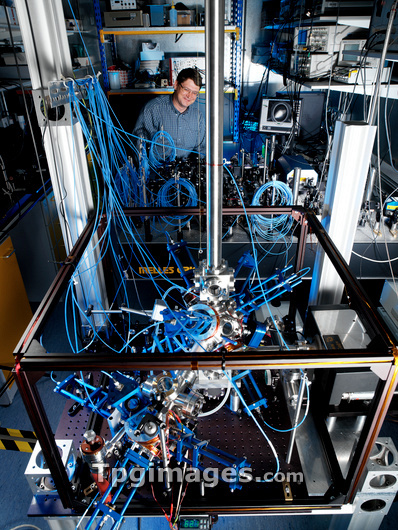
Rubidium atomic clock. Physicist working on a rubidium atomic clock. This atomic clock, also known as a frequency standard, uses an atomic 'fountain' to measure the exact length of one second. The fountain contains rubidium-87 atoms that oscillate between two energy levels at high speed. Counting these oscillations is the basis for the standard second. The current basis for the international definition of time is the caesium atomic clock, where one second is about 9193 million oscillations of caesium-133 atoms. The rubidium clock is smaller and cheaper than the caesium clock, but is less accurate as it uses a gas cell that is subject to pressure variations. Photographed at the National Physical Laboratory in Teddington, UK.
| px | px | dpi | = | cm | x | cm | = | MB |
Details
Creative#:
TOP03212593
Source:
達志影像
Authorization Type:
RM
Release Information:
須由TPG 完整授權
Model Release:
N/A
Property Release:
N/A
Right to Privacy:
No
Same folder images:

 Loading
Loading